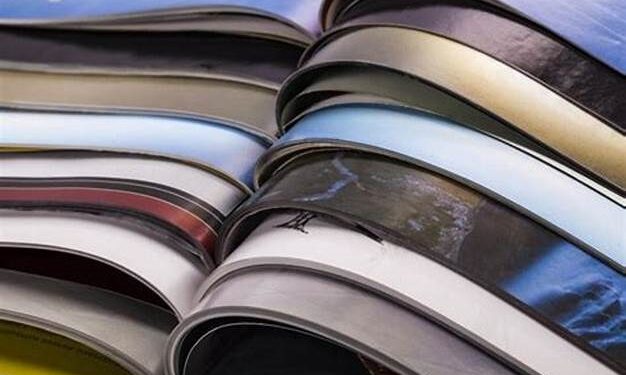PVC fabric, known for its durability and versatility, has become a staple in various industries, from advertising to fashion. As businesses and individuals seek to personalize and brand their products, printing on PVC fabric has gained significant attention. This guide explores the various methods of printing on PVC fabric, their applications, and the factors to consider when choosing the right technique for your needs.
Understanding PVC Fabric
PVC (Polyvinyl Chloride) is a type of plastic widely used in manufacturing due to its flexibility and resilience. As a fabric, PVC is created by applying a PVC coating to a polyester or cotton base. This process results in a strong, waterproof material ideal for both indoor and outdoor applications.
Properties and Benefits
Durability: PVC fabric is renowned for its strength and ability to withstand harsh environmental conditions, making it perfect for long-term applications.
Flexibility: Despite its strength, PVC fabric is flexible, allowing it to be used in various forms and shapes without cracking or breaking.
Waterproof and Weather Resistant: The inherent waterproof nature of PVC fabric makes it ideal for outdoor use, offering protection against rain and UV radiation.
Chemical Resistance: PVC fabric can resist oils, chemicals, and abrasion, making it suitable for industrial applications.
Printing Methods for PVC Fabric
Printing on PVC fabric requires choosing the right method to ensure high-quality results. Each method has its advantages and limitations, making it suitable for specific applications.
Screen Printing
Screen printing involves creating a stencil (or screen) and using it to apply ink onto the fabric. It is one of the most traditional methods of printing on textiles, including PVC.
Screen printing is cost-effective for large runs and produces vibrant, long-lasting colors. It is ideal for simple designs with a limited color palette.
This method is not suitable for highly detailed or complex designs and can be inefficient for small batches due to setup costs.
Digital Printing
Digital printing uses inkjet technology to apply ink directly onto the fabric. It is a modern method that offers precision and detail.
Digital printing is perfect for complex designs with multiple colors and gradients. It offers quick setup and turnaround times, making it suitable for on-demand production.
The cost can be higher for large-scale production compared to traditional methods, and the durability may be lower without proper treatment.
Flexographic Printing
Flexographic printing, or flexo, uses flexible relief plates to transfer ink onto the fabric. It is commonly used in packaging and label printing.
Flexo is fast and efficient for large production runs, offering consistent results. It is suitable for printing on continuous rolls of PVC fabric.
This method is less effective for intricate designs and may require significant setup time.
Heat Transfer Printing
Heat transfer printing involves transferring a printed image from a special paper onto the fabric using heat and pressure.
This method is excellent for small batches and customization, offering detailed and vibrant prints. It allows for easy personalization of designs.
The prints may fade over time, especially with frequent washing or exposure to sunlight, and are less durable than other methods.
Dye Sublimation Printing
Dye sublimation involves transferring dye onto a material using heat. This method is suitable for polyester-based PVC fabrics that can absorb the dye.
Dye sublimation produces high-quality prints with vivid colors and smooth gradients. It is ideal for textile-like PVC applications.
The fabric must have a special coating to accept the dye, and the method may not be suitable for all types of PVC.
Applications of Printed PVC Fabric
Printing on PVC fabric opens up a wide range of possibilities across different industries.
Advertising and Signage
Printed PVC is widely used in advertising due to its durability and weather resistance. Common applications include:
Banners: PVC banners are popular for outdoor advertising because they are waterproof and can withstand various weather conditions. They offer vibrant colors that draw attention and are easy to install and transport.
Posters and Displays: PVC fabric can be printed with high-resolution graphics, making it suitable for both indoor and outdoor displays. It provides a cost-effective solution for large-format advertising.
Fashion and Apparel
PVC fabric is increasingly being used in fashion for its unique properties:
Clothing :Designers use printed PVC for creating stylish raincoats, jackets, and accessories that are both functional and fashionable.
Bags and Accessories: PVC allows for innovative designs in handbags, wallets, and other accessories, providing a waterproof and durable option.
Interior and Exterior Decor
Printed PVC fabric is utilized in various decor applications:
Wall Coverings: PVC can be printed with intricate patterns and designs to create stunning wall coverings for both residential and commercial spaces.
Upholstery: Its durability makes PVC suitable for upholstery in furniture, providing a modern and easy-to-clean option.
Industrial and Commercial Uses
PVC fabric is a popular choice in industrial settings for its strength and resistance to harsh environments:
Flooring: Printed PVC flooring is used in commercial and industrial spaces due to its durability and ease of maintenance.
Tents and Tarpaulins: PVC is ideal for outdoor tents and tarpaulins, offering protection against the elements while providing branding opportunities.
Factors to Consider When Printing on PVC Fabric
To achieve the best results, several factors should be considered when printing on PVC fabric.
Design Considerations
High-resolution images are essential for achieving detailed prints, especially in digital and sublimation printing.
Ensure that the chosen printing method can accurately reproduce the desired colors, considering the fabric’s base color.
Fabric Preparation
Proper preparation of the PVC fabric is crucial to ensure adhesion and quality:
Remove any dirt, dust, or oils from the fabric surface to ensure optimal ink adhesion.
Some fabrics may require a pre-treatment or coating to enhance print quality and durability.
Environmental Impact
Consideration of environmental impact is increasingly important in the printing industry:
Opt for eco-friendly inks and processes to minimize environmental impact. Some methods, like digital printing, produce less waste and use fewer resources.
Choose PVC fabrics that can be recycled or repurposed to reduce waste.
Cost and Budget
Balancing quality and budget is essential when selecting a printing method:
Large-scale production may benefit from cost-effective methods like screen or flexographic printing, while smaller runs may justify the higher cost of digital printing.
Consider the importance of print quality and durability relative to budget constraints.
Troubleshooting Common Printing Issues
Despite advances in technology, printing on PVC fabric can present challenges.
Color Fading and Inconsistencies
Exposure to sunlight and harsh weather can lead to fading. Inconsistent ink application can cause color discrepancies.
Use UV-resistant inks and apply a protective coating to enhance durability. Ensure proper calibration of printing equipment for consistent results.
Adhesion Problems
Inadequate ink adhesion can result in peeling or cracking.
Ensure proper fabric preparation and use inks compatible with PVC. Consider post-print treatments to enhance adhesion.
Print Quality and Detail Loss
Loss of detail can occur with low-resolution images or improper printing settings.
Use high-resolution files and adjust printer settings for optimal quality. Conduct test prints to fine-tune the process.
Future Trends in PVC Fabric Printing
The industry is continuously evolving, with new trends shaping the future of PVC fabric printing.
Technological Innovations
Emerging technologies are enhancing printing capabilities:
Development of new inks offers better adhesion, durability, and eco-friendliness.
Integration of 3D printing techniques allows for innovative textures and effects on PVC fabric.
Sustainability Initiatives
As sustainability becomes a priority, the industry is moving towards greener practices:
Use of biodegradable and recyclable materials in PVC production.
Adoption of energy-efficient technologies and waste-reduction strategies in printing processes.
Conclusion
Printing on PVC fabric offers endless possibilities for customization and branding across various industries. By understanding the different printing methods and their applications, businesses and individuals can make informed decisions that align with their needs and goals. As the industry continues to innovate, PVC fabric printing will undoubtedly evolve, offering even more opportunities for creative expression and sustainable practices.











































































